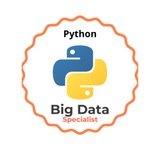🚀 Introduction to Programming with Python
🔹 Software = Instructions for hardware
🔹 Programming = Writing instructions to create software
🔹 Code = The instructions written to build software
🔹 Syntax = The grammar of a programming language
💡 Why Python? Python is beginner-friendly, powerful, and requires minimal code compared to other languages. Example: Printing "Hello World" is simpler in Python than in Java!
⚡ Compiler vs. Interpreter
🔹 Compiler (C, C++) → Translates entire code at once → Faster execution
🔹 Interpreter (Python, Java) → Executes code line by line → Easier debugging
🖥 Key Concepts
✅ Source Code = Human-readable instructions
✅ Processor = The brain of a computer
✅ Bytecode = Intermediate code generated after compilation
🔍 Pros & Cons
✔️ Compilers = Faster execution, better security, debugging tools
❌ Compilers = Slower compilation, catches only syntax/semantic errors
✔️ Interpreters = Easy debugging, efficient memory usage
❌ Interpreters = Slower execution
🔹 Software = Instructions for hardware
🔹 Programming = Writing instructions to create software
🔹 Code = The instructions written to build software
🔹 Syntax = The grammar of a programming language
💡 Why Python? Python is beginner-friendly, powerful, and requires minimal code compared to other languages. Example: Printing "Hello World" is simpler in Python than in Java!
⚡ Compiler vs. Interpreter
🔹 Compiler (C, C++) → Translates entire code at once → Faster execution
🔹 Interpreter (Python, Java) → Executes code line by line → Easier debugging
🖥 Key Concepts
✅ Source Code = Human-readable instructions
✅ Processor = The brain of a computer
✅ Bytecode = Intermediate code generated after compilation
🔍 Pros & Cons
✔️ Compilers = Faster execution, better security, debugging tools
❌ Compilers = Slower compilation, catches only syntax/semantic errors
✔️ Interpreters = Easy debugging, efficient memory usage
❌ Interpreters = Slower execution
👍2❤1
Python Basics
🔹 Variables = Store data for use in a program
🔹 Operators = Symbols for performing operations (+, -, *, /, %, etc.)
✔ Conditional Statements → "if-then" logic
🔹 Variables = Store data for use in a program
x = 1🔹 Data Types = Classification of data (Boolean, String, Number)
print(x) # Output: 1
number = 10
if number > 0:
print("The number is true") # Output: true
🔹 Operators = Symbols for performing operations (+, -, *, /, %, etc.)
print(1 + 2) # Output: 3🔹 Control Statements = Manage program execution flow
print(2 - 1) # Output: 1
✔ Conditional Statements → "if-then" logic
score = 85✔ Loop Statements → Repeat actions (for, while loops)
if score >= 90:
print("Excellent")
elif score >= 75:
print("Good job")
else:
print("Keep trying")
count = 1🔹 Functions = Reusable blocks of code
while count <= 5:
print(count)
count += 1
def my_function():
print("Hello from a function")
my_function() # Output: Hello from a function
👍3
